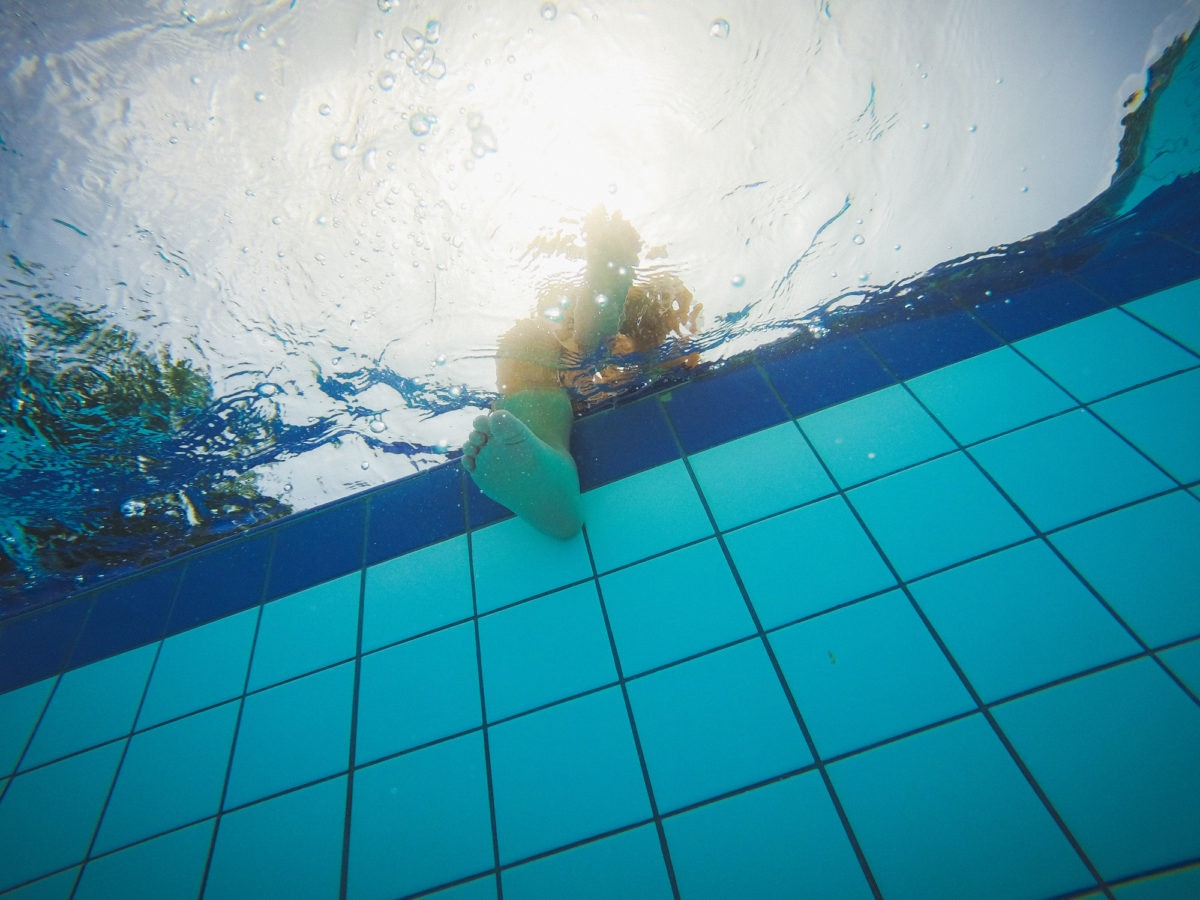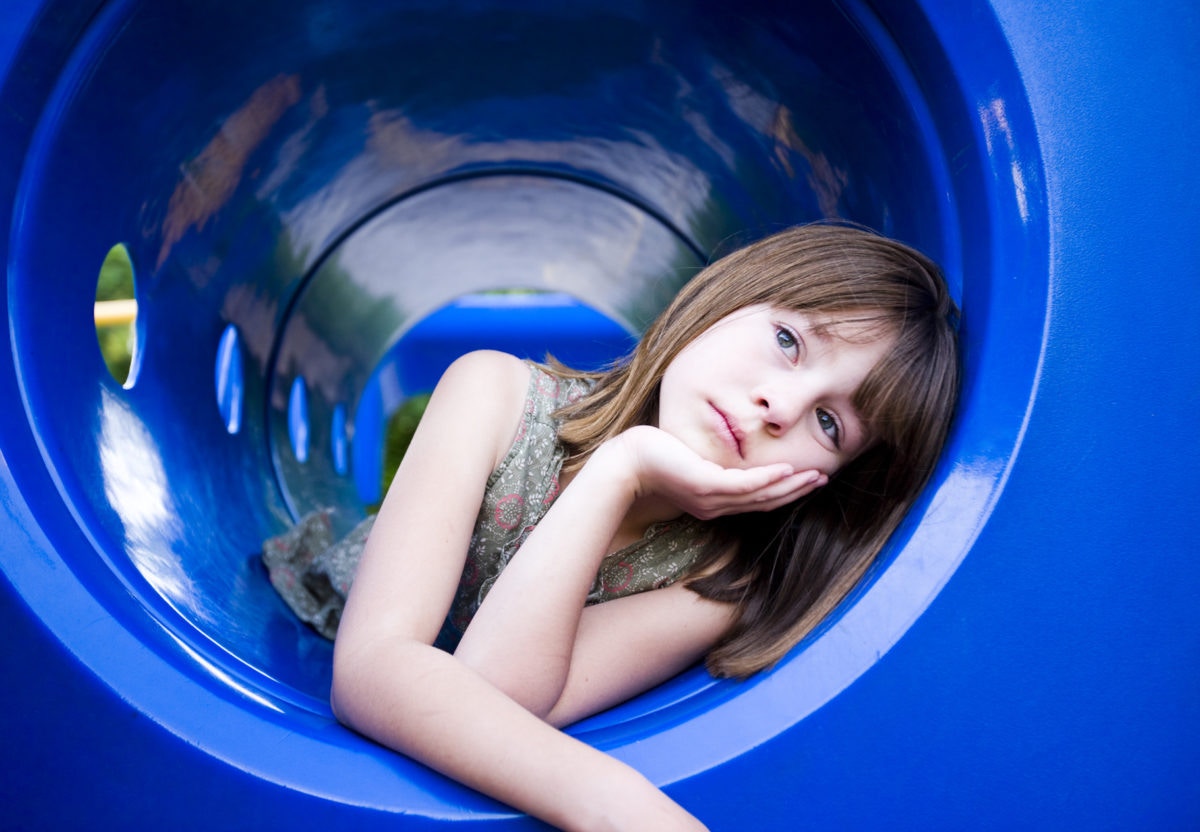My kids could not have been happier as they splashed in the water, playing with their friends. I felt like I was going to throw up. I’d dropped them off at their first day of summer camp that morning, thrilled to have four hours to myself. When I’d enrolled them in the camp run by the gym where I work out and teach group fitness, I asked about the ratio of adults to kids in the pool. They told me it would be two adults with a maximum of 15 kids, plus a lifeguard. “Isn’t that kind of a low ratio?” I’d asked. The camp was for kids ages two-and-a-half and up. The pool has an infinity edge that gradually extends to a depth of three feet. The camp director, a mom herself, assured me they’d always done it this way and it had been fine. She encouraged me to sit by the pool and watch if I wanted. Perhaps I was being overly protective, I thought. Obviously, the other parents didn’t seem to have a problem with it. My kids are three and five years old and neither of them can swim well. Though I pride myself on being a pretty hands-off (read: lazy) parent, when it comes to water safety, I don’t take chances. On the first day of camp I sat poolside and watched during swim time. My initial feeling of, “I can’t see how this is going to work” progressed to, “Oh my god this is a total shit show” to, “I don’t know how much longer I can stand to watch this before I start hyperventilating.” There were 13 campers, many of them under five years old, two adults, and zero lifeguards. Plus there were kids with their parents who were not attending camp swimming. I could hardly keep my eyes on my own two kids through the sea of people. At times, one camp staffer would take a kid to the restroom, leaving one adult in charge of 12 kids. I waited for them to blow a whistle and have the kids buddy up like we used to do at summer camp when I was a kid. That never happened. I waited, my eyes darting wildly to keep track of my girls until finally, they took the kids out of the water. At that point, I gathered my things, went to the locker room, sequestered myself in a bathroom stall and exhaled. Tears of frustration and anxiety spilled out while I choked back a little sob. Was I overreacting? I didn’t think so. But when I brought my concerns to one of the administrators of the gym, they were brushed off. I was offered only reassurance that the staff was extremely responsible. “I’m sure they are,” I countered. “I just don’t think there are enough of them for all of the kids to be safe in the pool.” To meet the American Camping Association's (ACA) standards, camps must adhere to minimum staff ratios, which pertain to overall supervision, but not specifically to aquatic supervision. While these ratios vary according to age, requirements change according to whether the children are on land or in the water is at each camp’s discretion. ACA-accredited day camps require a minimum ratio of 1-to-6 for children ages five and under, 1-to-8 for children ages six to eight, and 1-to-10 for children ages nine to 14. Ratios are slightly higher for overnight campers: 1-to-5 for children ages five and under, 1-to-6 for children six to eight, and 1-to-8 for children ages nine to 14. ACA accreditation is completely voluntary, however. If a camp has the credential, they have gone through a rigorous, costly accreditation process, and will typically display proof of certification on their website and/or in their office. While the ACA accreditation is a valuable credential, it is no replacement for doing your homework. According to Becca Mack, the executive director of camping at Colorado’s Boulder Valley YMCA, ensuring that your child’s camp follows state licensing guidelines and provides adequate staff training is just as important as the ACA stamp of approval, if not more so. Whether or not they’re accredited by the ACA, camps must meet certain minimum standards set by their state. These requirements vary widely from state to state. While some states’ requirements are consistent throughout, in others they are specific to the city or county. Meanwhile, there are a few states that have adopted the same standards as the ACA. An index of resources for each state compiled by the ACA can be found here. While some states’ websites are very transparent about their staffing ratios, including specific requirements for aquatics (Maine is a great example), others, like my home state of Colorado, are clear as mud. Mack recommends parents talk directly to camp administrators to find out how they train their staff to manage swim time and make sure they know and adhere to their state’s licensing standards. For example, staff training at the Boulder Valley YMCA includes a water safety segment where they go over every aspect of swim time, including face checks, staff presence in the pool, and more. Says Mack, “ we do a mock pool time, so everyone learns what needs to be done.”
While the ACA standards dictate that camps must institute a system to quickly account for all campers involved in aquatic activities, it is at the camp’s discretion to decide which system to employ. While there is an app for nearly everything, they still haven’t come up with one to replace the Buddy System, a common water safety check that has not changed much, if at all, since my youth, whereby the lifeguard blows a whistle signaling campers to pair up with a pre-designated swim buddy. The Boulder Valley YMCA, which is not ACA-accredited, takes that requirement a step further, stipulating that every 15 minutes a staff member “must physically see each child. Instead of just a head count, they are specifically matching the child’s name on a list to their face.”
Some camps take the initiative to exceed state minimum staffing ratios. Boulder Valley’s YMCA Inspire Preschool is one such example. The state of Colorado requires a minimum staff ratio of 1-to-10 for preschoolers (ages three to four years old). According to Lisa Swainey, the preschool’s director, Inspire raises the bar by requiring not only a lifeguard dedicated exclusively to the preschoolers but also a minimum of two preschool staffers anytime the kids are swimming. Additionally, preschoolers are allowed only to splash within the confines of the baby pool, which reaches a maximum depth of one foot.
Beyond my casual questions about the swimming situation at my kids’ camp, it never occurred to me to explore my state’s licensing requirements until I witnessed the swim program firsthand. (I use the term “swim program” loosely.) I admit, my main camp selection criteria were convenience and price. After my poolside near-panic attack, though, my concern was safety. And rightly so, according to experts like Dr. Sanjay Gupta, senior medical correspondent at CNN Health. In an article posted there, he says toddlers are at a relatively huge risk of drowning, even in water as shallow as one inch, due to their top-heavy bodies: “Children 4 and under actually have the single highest drowning death rate according to the National Safety Council.” And according to Alan Steinman, MD, former director of health and safety at the U.S Coast Guard, drowning is a highly inconspicuous event. It happens quietly, without any arm flailing or cries for help.
Though I hated to break my kids’ little hearts, I felt I had no choice but to pull them out of camp. My kids got over it within a couple of weeks. I, on the other hand, would never have gotten over it had anything happened to them at that camp. I never would have forgiven myself for not trusting my instinct. As parents, we can research every topic, ask every question, and Google until our eyes burn, but at the end of the day, selecting the right camp is like the rest of parenting: Mostly we go on instinct.



